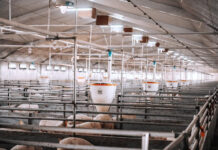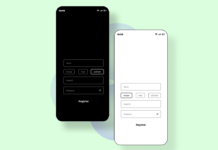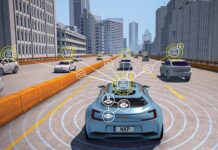The Internet of Things (IoT) is a network of many physical objects that uses sensors and APIs to establish connection and exchange data over the internet.These objects may include software, machines, and home appliances among others. The IoT solutions offer greater accuracy and efficiency. They require minimal human intervention and cost by direct integration of physical environment into computer-based systems. The technology can be used in a host of applications, ranging from consumer electronics and retail to healthcare and transportation. Grand View Research predicts the IoT market to reach USD 1.88 trillion by 2022.
North America IoT market revenue by application, 2012 – 2022 (USD Billion)
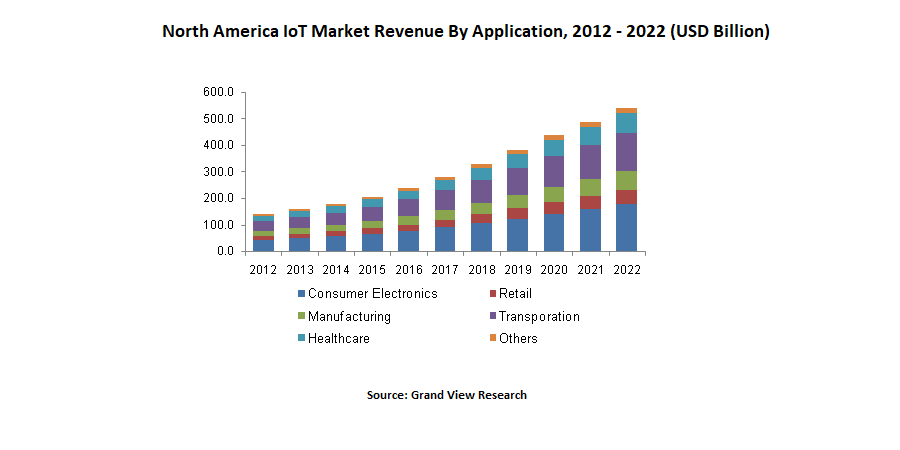
What Drives IoT?
Disruptive developments in telecommunication technology and high adoption of connected devices, mobile devices positively influence the demand for internet of things solutions. Easy access to high-speed internet facilities, decreasing average selling prices of sensors and modules and increasing penetration of cloud computing and Platform as a Service (PaaS) are also driving the demand. Development of artificial intelligence (AI) and machine learning, use of predictive analytics for business, and consumer-friendly IoT analytics are also driving demand for innovative IoT Services.Development of advanced and efficient data processing solutions can boost adoption of IoT solutions. Cutting-edge analytics and data processing plays an important role in deriving results from high volumes of data gathered using machine to machine communication.
Businesses, across the world are developing newoperating models form creating connected enterprises by merging operative and information departments. This transformation is supposed to improve overall productivity. Increasing adoption of connected devices across industries like manufacturing, retail, healthcare, and energy and utilities among others is a boon forIoT based solutions.High adoption of robotics and automation processes andintroduction of innovative low-power hardware devicesis also contributing towards the growth of IoT platform.
Retailers are also making hefty investments in deploying advanced IoT solutions for monitoring products and supply chain andkeeping track of the customer base. The IoT solutions can be used to develop apps and services that can integrate real-time decision-making procedures to create improved services.
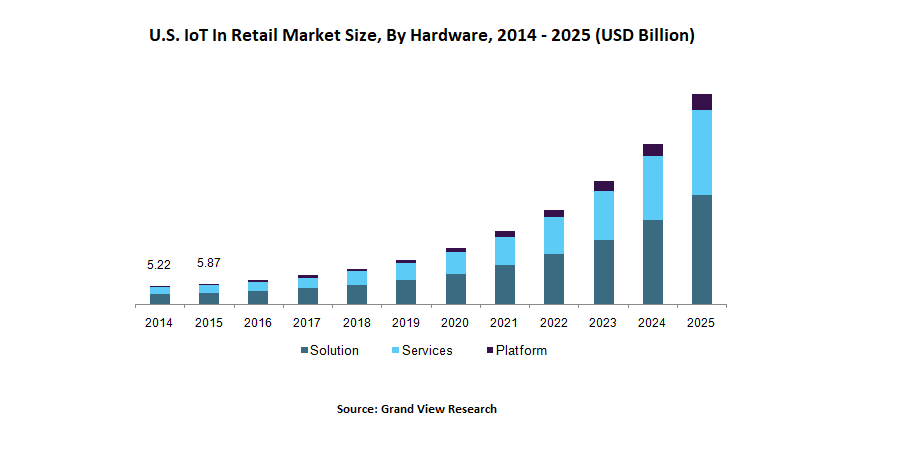
What Future Holds for IoT?
In one of the recent developments, Microsoft Corp. introduced its Microsoft IoT Central. It is an IoTsoftware-as-a-service (SaaS) solution intended to support IoT practices by providing security along with the reliability.This platform can benefit the companies designingproduction-grade IoT applications in limited time and without managing the required backend set-up or employing new skill sets for newIoTsolutions.The platform also empowers Azure IoT Hub as its cloud gateway, that can be useful for making secure connection, updating,and sending instructions to devices. It consists of many features including device authentication and secure connectivity and IoT protocols and extensibility. The platform has capability to automatically scale numerous connected devices as well as events via its cloud gateway.
Microsoft Corp. has also launched Azure Location Based Services to provide customers location-based services (LBS) to provide customers location competences. This LBS can be directly integrated into Azure. This service can be useful for fleet management, logistics, retail, and Internet of Things (IoT) asset tracking. It also includes set of APIs,which can offer search, mapping, routing, time zones, and traffic.
An evolving trend among the developers across the world is to transform technical focus to improve connectivity for data collection and to provide highly secured environment with enhanced cloud connections. IoT-based technologies have the capabilities to improve visibility in manufacturing process in such way that everyproduction unit can be visible during the production process.
Author Bio:
Rutuja Jathar is a writer and editor with 9+ years of work experience. Currently leading a team of technical writers at Grand View Research, her passion for words and technology reflects in her contribution to developing and editing research information. She has also written numerous industry blogs and news features as a guest author. When not writing, she likes to stay informed about technological innovations and disruptions across all walks of life.
